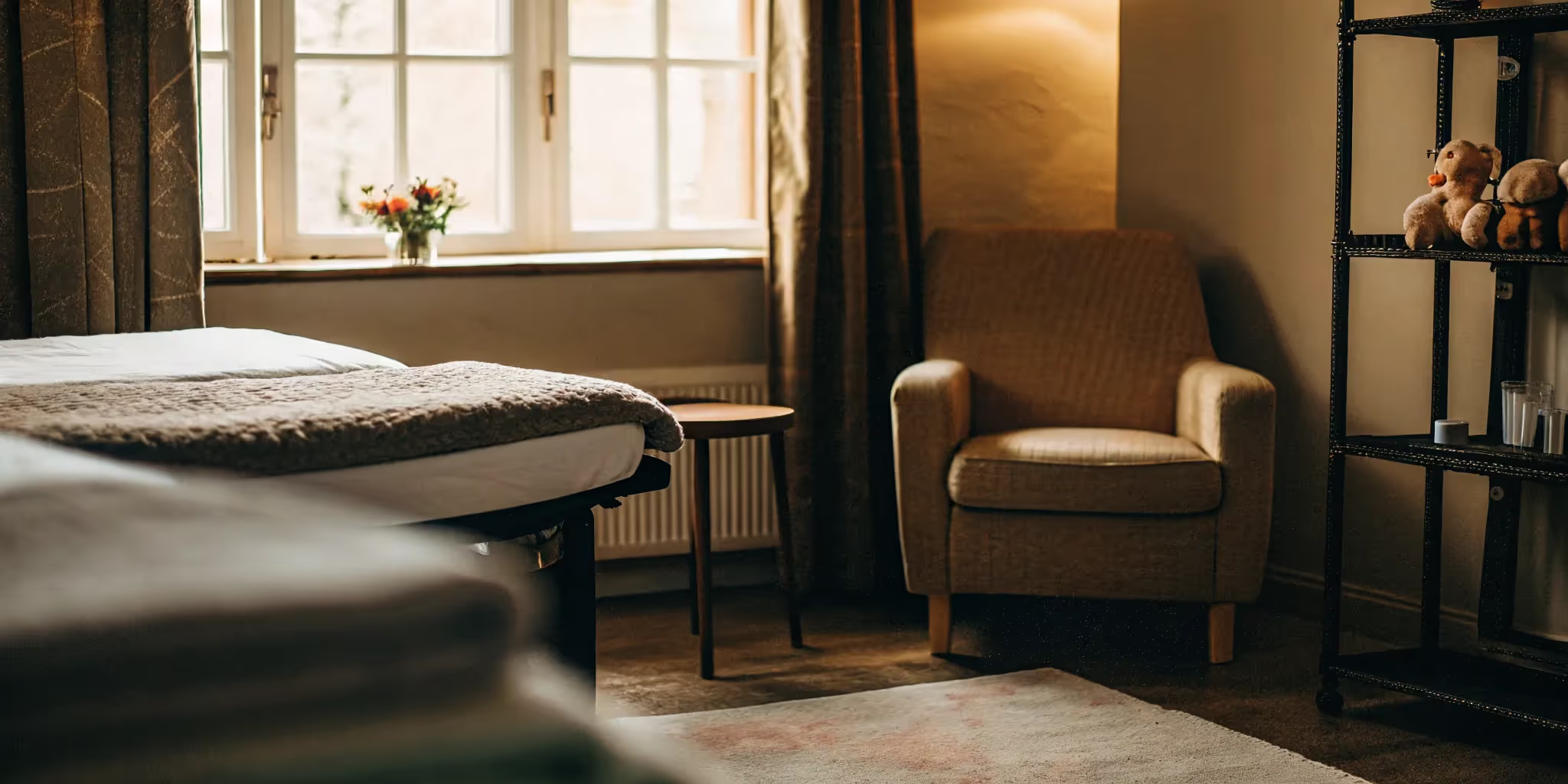In-Home vs Center Based ABA Therapy: What’s Best for Your Family?
Compare in-home vs. clinic-based ABA therapy to find the best fit for your child’s needs. Discover the benefits, challenges, and key difference of each setting.

In-Home vs. Clinic-Based ABA Therapy: Making the Right Choice
Navigating the world of ABA therapy can feel overwhelming, especially when deciding between in-home vs. clinic-based ABA. This comprehensive guide simplifies the decision-making process, providing you with the knowledge and resources you need to choose the best setting for your child. We'll explore the core principles of ABA, delve into the differences between in-home and clinic-based therapy, and discuss the advantages and disadvantages of each. You'll learn how to assess your child's individual needs, consider family dynamics, and evaluate cost and insurance coverage. We'll also address common misconceptions about ABA settings and empower you with practical tips for personalizing therapy to maximize your child's progress.
Key Takeaways
- The ideal ABA setting is personalized: Consider your child's learning style and personality. Some children thrive at home, while others benefit from a clinic's structured environment. The best fit depends on your child's individual needs.
- Family participation is essential: Regardless of the setting, your involvement is key to success. Reinforce learned skills at home, communicate openly with therapists, and create a supportive environment.
- Research and gather information: Use available resources like BCBAs, support groups, and online materials to understand ABA therapy and make informed decisions for your child. Connecting with other families can provide valuable support and insights.
What is ABA Therapy?
ABA therapy is a widely recognized and evidence-based treatment for children with Autism Spectrum Disorder (ASD). It’s designed to teach new skills, reduce problematic behaviors, and increase independence. Think of it as a personalized roadmap, guiding children toward reaching their full potential. ABA isn't just for kids with autism; the principles can apply to individuals of all ages and various behavioral challenges. Learn more about ABA therapy and common misconceptions.
Core Principles of ABA
At its core, ABA therapy uses research-based teaching methods like modeling, prompting, and positive reinforcement to help children develop essential skills. ABA focuses on understanding why a behavior occurs and then using that knowledge to create positive change. It’s all about breaking down skills into smaller, manageable steps and celebrating each milestone.
Goals and Benefits
The ultimate goal of ABA therapy is to equip individuals with the skills they need to thrive in everyday life. This could involve improving communication and social skills or mastering daily living activities like dressing and eating. ABA therapy is adaptable and can be implemented in various settings—at home, in school, or in a clinic. Home-based ABA therapy allows parents to reinforce learned skills throughout daily routines, leading to more consistent progress. Parental involvement is key to success, ensuring that what's learned in therapy translates into real-world situations. Discover the vital role parents play in home-based ABA therapy.
In-Home vs. Clinic-Based ABA: Key Differences
When considering ABA therapy for your child, one of the first decisions you'll face is choosing between in-home and clinic-based settings. Both offer unique advantages, and the best fit depends on your child's individual needs and family circumstances. Let's break down the key differences:
Environment
In-home therapy takes place in the familiar and comfortable environment of your child's home. This can be particularly beneficial for children who thrive in familiar surroundings or experience anxiety in new places. It allows therapists to observe and address behaviors within the context of everyday routines and naturally occurring situations. Clinic-based therapy, on the other hand, offers a structured and dedicated learning environment, often equipped with specialized tools and materials. This setting minimizes distractions and provides a consistent space for focused learning and skill development.
Structure and Routine
In-home ABA therapy tends to be more flexible and adaptable to your family's schedule and routines. Therapists can work around your child's natural rhythms and incorporate therapy into daily activities. Clinic-based therapy typically follows a more structured schedule with set appointment times and pre-planned activities. This predictable routine can be helpful for children who benefit from clear expectations and consistent structure. Visual schedules can be a great tool in either setting to help children understand and anticipate upcoming activities.
Resources
Clinic-based settings often have a wider range of specialized equipment, toys, and learning materials readily available. They may also offer access to a team of professionals, including occupational therapists, speech therapists, and other specialists. In-home therapy may require more creativity in adapting everyday household items for therapeutic use, but it also allows therapists to directly address challenges within the child's natural environment. For example, teaching a child to set the table can be a practical life skills lesson in an in-home setting.
Family Involvement
Family involvement is a crucial component of ABA therapy, regardless of the setting. However, in-home therapy often provides more opportunities for parents and caregivers to directly observe and participate in therapy sessions. This can facilitate learning and allow families to more easily implement strategies and reinforce skills throughout the day. In clinic-based settings, parent training and communication with therapists are still essential for ensuring consistency and carrying over learned skills into the home environment. Parent involvement is key to maximizing the benefits of ABA therapy, and resources like those available from My Team ABA can offer valuable guidance.
In-Home ABA: Advantages and Challenges
In-home ABA therapy brings the learning experience directly to your child's familiar environment. This approach offers unique advantages and presents specific challenges to consider. Let's explore both sides to help you make informed decisions about your child's ABA therapy.
Comfort and Familiarity
One of the most significant benefits of in-home ABA is the comfort it provides. Children feel more at ease in their own homes, surrounded by familiar objects and routines. This comfortable setting can reduce anxiety and create a more receptive learning environment. Being in a familiar space allows children to practice new skills in the context of their everyday lives, which can lead to better generalization of those skills. For example, if a child is learning to request items, they can practice this skill directly in their kitchen or playroom. This focus on real-world application is discussed further in articles comparing home-based and clinic-based ABA therapy.
Real-Life Skill Application
In-home ABA facilitates the direct application of learned skills to real-life situations. Therapists can work with children on skills like communication, self-care, and social interaction within the natural flow of their daily routines. This approach also empowers parents and caregivers to reinforce these skills throughout the day, leading to more consistent progress. This consistent reinforcement is crucial for lasting behavioral change. Articles like this one on ABA therapy at home vs. in a clinic highlight the positive impact of parental involvement in reinforcing learned skills.
Potential Distractions
While the home environment offers comfort, it also presents potential distractions. Familiar toys, siblings, or pets can divert a child's attention away from therapy activities. This can make it more challenging for some children to focus and maintain engagement during sessions. Some research suggests that the structured environment of a clinic setting may lead to faster learning for certain children, as highlighted in this article comparing home-based and center-based ABA therapy. It's important to consider your child's individual needs and learning style when evaluating the potential impact of distractions.
Equipment Access
In-home ABA may have limitations regarding access to specialized equipment and resources commonly found in clinic settings. Clinics often have dedicated spaces with a wider range of therapeutic tools and materials. This can be a factor to consider if your child requires specific equipment for their therapy program. However, many in-home therapists bring necessary materials with them, and the focus on real-life application often minimizes the need for specialized equipment. For more information on the differences between these settings, you can explore resources that discuss home-based vs. clinic-based ABA therapy.
Clinic-Based ABA: Benefits and Drawbacks
Clinic-based ABA therapy takes place in a dedicated center designed specifically for therapeutic intervention. This setting offers unique advantages and disadvantages compared to in-home ABA. Understanding these differences is key to making an informed decision for your child.
Structured Learning
One of the primary benefits of clinic-based ABA is the highly structured learning environment. Centers are typically designed to minimize distractions and maximize focus, creating an ideal setting for concentrated learning. Trained professionals implement individualized programs with clear goals and objectives, ensuring consistent progress. This structured approach can be particularly helpful for children who thrive in predictable routines and benefit from a dedicated learning space. This offers families an alternative way to support their child's development, as detailed in resources like My Team ABA's comparison of ABA therapy at home vs. in a clinic.
Specialized Tools and Resources
Clinic-based settings often have a wider array of specialized tools and resources not typically available in a home setting. This can include specialized equipment, therapy materials, and access to a team of specialists, such as BCBAs, occupational therapists, and speech therapists. This multidisciplinary approach allows for comprehensive care tailored to each child's specific needs. For a deeper look at the resources available in clinic settings, check out Blue Gem ABA's insights on home-based vs. clinic-based ABA. This concentrated approach can lead to faster skill acquisition and generalization.
Peer Interaction
Clinic-based ABA provides regular opportunities for social interaction with peers, a crucial aspect of social skills development. Interacting with other children in a therapeutic setting allows for practicing social skills, communication, and play in a structured and supportive environment. These interactions can be invaluable for children with autism spectrum disorder, who may experience challenges with social communication and interaction. Blue ABA Therapy discusses the importance of peer interaction in their comparison of in-home vs. center-based therapy.
Travel and Logistics
While clinic-based ABA offers many benefits, it's essential to consider the logistical aspects. Attending therapy sessions at a center requires adhering to clinic hours and managing transportation, which can be challenging for families with busy schedules or limited transportation options. The time commitment involved in traveling to and from the clinic should be carefully weighed against the benefits of the structured environment and specialized resources. Ambition ABA offers further considerations on the logistics of clinic-based therapy in their resource on understanding the differences between in-home and clinic-based ABA.
Choosing an ABA Setting: Factors to Consider
Deciding between in-home and clinic-based ABA therapy is a personal one. There’s no single right answer—it depends on your child’s unique needs and your family’s circumstances. This section breaks down the key factors to weigh as you make this important decision.
Child's Needs and Preferences
First, consider your child’s individual needs and learning style. Some children thrive in the familiar comfort of their home, where therapy can be integrated into daily routines. This approach maximizes parent involvement and allows therapists to address behaviors in the child’s natural environment, as highlighted by The Helm ABA. For these children, in-home therapy allows them to focus on real-life functional skills, directly impacting the situations they encounter every day. Other children may benefit from the structured environment of a clinic, with fewer distractions and specialized resources. Think about what setting best supports your child’s personality and learning preferences. If your child is easily distracted, a clinic setting might be a better fit. If they thrive on routine and predictability, the structured setting of a clinic might be preferable. Home-based therapy also empowers parents to reinforce learned skills throughout the day, leading to better outcomes.
Family Dynamics and Schedules
Your family’s schedule and lifestyle also play a significant role. In-home therapy offers more flexibility, which can be helpful for families with busy or unpredictable schedules. However, clinic-based therapy provides a set routine, which some families find beneficial. Consider what structure works best for your family. As The Helm ABA points out, the decision isn’t always entirely up to the parents. Some providers only offer one type of therapy, so research your options in your area. Clinic-based therapy often follows a more regimented schedule, which can be helpful for establishing consistent routines. In-home therapy, on the other hand, tends to be less structured, allowing for flexibility to adapt to the family's daily life.
Cost and Insurance
Cost and insurance coverage are practical considerations. In-home ABA therapy can be expensive, averaging around $17,000, according to Ambition ABA, while clinic-based therapy costs vary and may be partially covered by insurance. Carefully review your insurance policy to understand what’s covered for both in-home and clinic-based services. Insurance coverage for ABA therapy can vary significantly, so it's essential to check your policy details and understand what's covered for both in-home and center-based services. ABA therapy can be a significant financial investment, so understanding your insurance benefits is crucial for making informed decisions.
Skill Generalization
Finally, think about skill generalization—the ability to apply learned skills in different settings. While in-home therapy allows children to practice skills in real-life situations, clinic-based therapy offers a controlled environment with trained professionals and diverse resources, as explained by My Team ABA. This structured setting can be particularly helpful for children who need support in transferring skills learned in therapy to other environments. In-home therapy provides opportunities for practicing skills in real-life situations, which can enhance a child's engagement and responsiveness. Consider which setting will best support your child’s ability to generalize their newly acquired skills.
Making the ABA Decision: A Guide for Families
Choosing between in-home and clinic-based ABA therapy is a big decision. There’s no single right answer, and what works for one family might not work for another. This section offers a simple process to help you make the best choice for your child.
Assess Your Child's Needs
First, consider your child's individual learning style, personality, and current skills. Some children thrive in the familiar comfort of their home, while others benefit from the structured environment of a clinic. Think about your child's specific challenges and goals. A child who struggles with distractions might do better in a clinic setting, while a child working on generalizing skills might benefit from in-home therapy. As the experts at Blue Gems ABA explain, the ideal choice depends on your child's needs, your family's circumstances, and practical matters. Consider your family’s schedule when making your decision, as advised by The Helm ABA. Carefully weigh the pros and cons of each approach.
Consult with ABA Professionals
Speaking with experienced professionals is essential. Reach out to Board Certified Behavior Analysts (BCBAs) to discuss your child's needs and which setting might be the best fit. Blue Gems ABA recommends discussing options with a professional to determine what best suits your child. A BCBA can assess your child and offer personalized recommendations. They can also help you define your treatment goals and determine which setting—in-home or clinic-based—best aligns with those goals, as highlighted by Blue ABA Therapy. This professional guidance can be invaluable for making an informed decision.
Consider a Hybrid Approach
Don't feel limited to a single setting. A hybrid approach, combining in-home and clinic-based therapy, might offer the advantages of both. Blue ABA Therapy emphasizes that both in-home and center-based ABA therapy can be effective, and the best choice depends on individual needs. A hybrid model offers flexibility and can adapt to your child's evolving needs. Some providers, like ABA Centers of America, offer both options, allowing you to create a customized plan. This flexibility can be key to maximizing your child's progress.
Family's Role in ABA Success
A child's success in ABA therapy depends heavily on the family's active participation. It's a team effort, and when families are involved, the benefits of therapy extend beyond the clinic or in-home sessions. This involvement takes several forms, all crucial for creating a supportive and consistent learning environment.
Consistent Reinforcement
One of the most significant ways families contribute is through consistent reinforcement. Children learn best when newly acquired skills are practiced and reinforced in various settings. Parents and caregivers play a key role in carrying over the strategies and techniques learned during therapy sessions into everyday routines at home. This consistency helps solidify these skills, making them more likely to stick. Engaged parents see improved outcomes in their children's learning, especially in early intervention programs.
Supporting Therapy at Home
Whether therapy takes place at home or in a clinic, families can support the process by creating a home environment that complements the therapeutic work. This might involve setting up designated spaces for specific activities, incorporating visual schedules, or simply providing positive reinforcement for desired behaviors. Families can work with therapists to adapt strategies for the home setting, even with clinic-based therapy.
Communicating with Therapists
Open and honest communication with your child's ABA therapist is essential. Regularly sharing observations, concerns, and successes helps the therapist tailor the treatment plan to your child's specific needs. It also allows you to stay informed about progress and any adjustments to the therapy program. Effective communication ensures everyone is on the same page, working together toward the same goals. This collaborative approach strengthens the therapeutic relationship and ultimately benefits your child.
Common Misconceptions about ABA Settings
It’s easy to get caught up in some common misconceptions when weighing in-home versus clinic-based ABA therapy. Let’s clear up a few:
Effectiveness
One frequent misconception is that one setting is inherently “better” than the other. The truth is, the effectiveness of ABA therapy depends more on the quality of the program, the therapist's skills, and the child's individual needs than the location. Both in-home and clinic-based ABA therapy can be highly effective. In-home therapy allows therapists to teach skills within the child’s natural environment, while clinic-based settings offer a controlled space with fewer distractions. The best approach depends on your child. For a deeper look at this, check out this comparison of in-home and clinic-based ABA.
Flexibility and Scheduling
Many parents assume in-home therapy offers greater flexibility. While in-home sessions can often be arranged around a family’s existing routine, clinic-based programs may offer a wider range of session times to accommodate working parents. Ultimately, the most flexible option depends on the specific provider and your family’s needs. This piece on the differences between home-based and clinic-based ABA offers additional insights.
Social Skills Development
Another misconception is that clinic-based therapy is automatically superior for social skills development. While the clinic setting might provide more opportunities for peer interaction, in-home therapy can focus on social skills within the context of everyday life, like interacting with family members or playing in the neighborhood. Both settings can effectively teach social skills, using different approaches. For more on the benefits of center-based care, this article is a helpful resource.
Cost
Finally, there are often misconceptions about the cost of ABA therapy. Some believe that in-home therapy is always more expensive. In reality, the cost of both in-home and clinic-based ABA can vary widely depending on factors like location, provider, and intensity of services. Insurance coverage also plays a significant role. It’s essential to research and compare costs from different providers and explore your insurance options to determine the most affordable approach for your family. If you'd like to learn more, this resource breaks down the costs associated with each setting.
Resources for ABA Decisions
Making informed decisions about your child's ABA therapy involves tapping into reliable resources and support networks. Whether you're just starting your ABA journey or looking for additional guidance, connecting with the right people and information can make all the difference.
BCBAs
Board Certified Behavior Analysts (BCBAs) are your go-to experts for personalized guidance. They can assess your child's unique needs and develop a tailored treatment plan. When choosing a BCBA, look for someone who prioritizes parental involvement, as this is crucial for carrying over learned skills into everyday life. A BCBA can also help you weigh the pros and cons of in-home versus clinic-based ABA therapy, ensuring the setting aligns with your child's needs and family dynamics.
Support Groups and Organizations
Connecting with other families facing similar challenges can provide invaluable emotional support and practical advice. Support groups and organizations offer a safe space to share experiences, ask questions, and learn from others who understand your journey. These groups can also help clarify common misconceptions about ABA, empowering you to make confident choices for your child.
Educational Materials and Research
Equipping yourself with knowledge is essential for effective decision-making. Explore reputable websites and educational resources that explain the nuances of home-based versus clinic-based ABA, including the impact of parental involvement on treatment outcomes. Research consistently shows that engaged parents play a vital role in the success of early intervention programs, leading to improved learning outcomes for children.
Personalizing ABA Therapy for Your Child
No two children are alike, and that’s especially true when it comes to children receiving ABA therapy. Personalizing your child’s therapy is crucial for maximizing its effectiveness. This means tailoring the strategies, structure, and goals to their unique needs, strengths, and preferences. Let's explore how to make ABA therapy truly work for your child.
Adapting Therapy Strategies
ABA therapy isn't a one-size-fits-all approach. It’s about finding the right strategies that resonate with your child's learning style and developmental stage. Some children thrive with highly structured activities, while others benefit from a more naturalistic, play-based approach. For example, incorporating your child's favorite toys or interests into therapy sessions can increase engagement and motivation. If your child enjoys building with blocks, a therapist might use blocks to teach counting, colors, or following instructions. Adapting therapy strategies also means recognizing and accommodating your child's sensory sensitivities. If your child is sensitive to loud noises, the therapist can adjust the environment or use visual cues instead of auditory ones. This individualized approach ensures that therapy is both effective and enjoyable for your child. Home-based ABA therapy can be particularly helpful, allowing parents to reinforce these personalized strategies throughout the day. Parental involvement is key to ensuring consistency and maximizing the benefits of ABA therapy.
Balancing Structure and Flexibility
Finding the right balance between structure and flexibility is essential for successful ABA therapy. While a structured environment provides predictability and helps children understand expectations, flexibility allows therapists to adapt to your child's changing needs and moods. A structured schedule might include dedicated times for specific activities, but within those activities, there can be flexibility in how the skills are taught. For instance, if a child is working on communication skills, the therapist might use flashcards one day and engage in a conversation-based activity the next. This balance is important regardless of whether therapy takes place at home or in a clinic. Both approaches aim to support a child's development, but they differ in their structure and how they are implemented. In-home ABA offers the advantage of integrating learning into daily routines, providing a natural and familiar context for skill development.
Measuring and Celebrating Achievements
Tracking progress and celebrating achievements is a vital part of personalized ABA therapy. It’s important to set realistic goals and regularly monitor your child's progress. This not only helps the therapist adjust the treatment plan as needed, but also provides a sense of accomplishment for both the child and the family. Progress can be measured in various ways, from tracking the frequency of desired behaviors to observing improvements in social interactions. Celebrating even small milestones can boost your child's confidence and motivation. This could involve verbal praise, a small reward, or a fun activity. Remember, progress isn't always linear, and there will be challenges along the way. Engaged parents play a crucial role in supporting their child's progress and celebrating their successes. By working closely with your child's therapist and actively participating in their therapy journey, you can help them reach their full potential. When choosing between in-home and clinic-based ABA, consider your child's individual needs and the pros and cons of each setting to determine the most effective approach.
Related Articles
- Understanding the Autism Spectrum: Insights for BCBAs - Alpaca Health
- How to Start an ABA Therapy Practice: Your Complete Guide - Alpaca Health
- Start Your ABA Practice: Essential Steps for Success - Alpaca Health
- Found an ABA Practice: Your Step-by-Step Guide - Alpaca Health
- ABA Therapy Marketing: A Practical Guide for BCBA Practices - Alpaca Health
Frequently Asked Questions
Is one ABA setting better than the other?
Not necessarily. Both in-home and clinic-based ABA therapy can be effective. The best fit depends on your child's individual needs, learning style, and your family's circumstances. In-home therapy offers comfort and real-life application, while clinic-based settings provide a structured environment with specialized resources. Consider what environment best supports your child's personality and learning preferences.
How can I support my child's ABA therapy at home, even if it's clinic-based?
Regardless of the setting, family involvement is key to ABA success. You can support your child by reinforcing learned skills at home, creating a supportive environment, and maintaining open communication with the therapist. This consistency helps generalize skills and ensures that what's learned in therapy translates to everyday life. Even if therapy takes place in a clinic, you can still practice skills and strategies at home to reinforce learning.
What if my child gets easily distracted during in-home therapy sessions?
While the home environment offers comfort, it can also present distractions. If your child struggles with focus, discuss strategies with the therapist to minimize distractions. This might involve creating a dedicated therapy space, using visual aids, or incorporating breaks into the session. The therapist can also adapt activities to maintain your child's engagement. Remember, the goal is to create a learning environment that works best for your child.
How do I know if a hybrid approach of in-home and clinic-based ABA is right for my child?
A hybrid approach can offer the benefits of both settings. It's a good option if your child needs a structured environment for some skills and a more natural setting for others. Discuss this possibility with your child's BCBA. They can help you determine if a hybrid approach aligns with your child's needs and goals. A hybrid model can provide flexibility and adapt to your child's evolving needs.
What are the key factors to consider when choosing between in-home and clinic-based ABA?
Consider your child's individual needs and preferences, family dynamics and schedules, cost and insurance coverage, and the importance of skill generalization. Each setting offers unique advantages, and the best choice depends on your specific situation. Consulting with a BCBA is crucial for personalized guidance. They can assess your child and offer recommendations based on their expertise and your family's circumstances.
Looking for a change?
Start an ABA practice today — with none of the admin burden.





